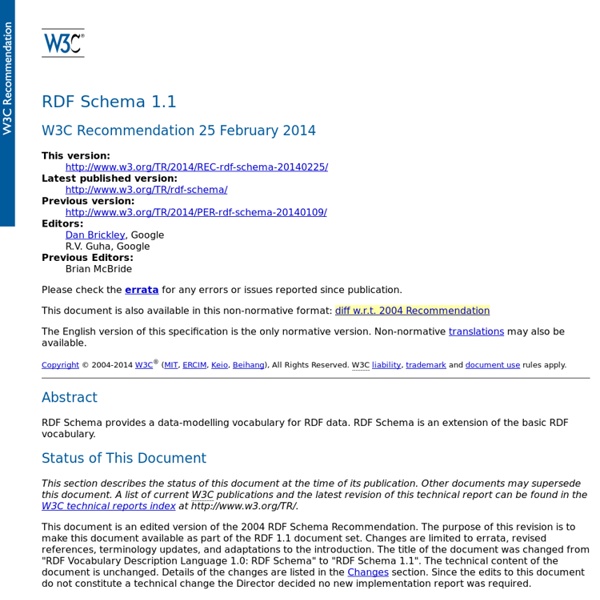RDF Vocabulary Description Language 1.0: RDF Schema

Dublin Core Metadata Element Set, Version 1.1
Introduction The Dublin Core Metadata Element Set is a vocabulary of fifteen properties for use in resource description. The name "Dublin" is due to its origin at a 1995 invitational workshop in Dublin, Ohio; "core" because its elements are broad and generic, usable for describing a wide range of resources. The fifteen element "Dublin Core" described in this standard is part of a larger set of metadata vocabularies and technical specifications maintained by the Dublin Core Metadata Initiative (DCMI). The full set of vocabularies, DCMI Metadata Terms [DCMI-TERMS], also includes sets of resource classes (including the DCMI Type Vocabulary [DCMI-TYPE]), vocabulary encoding schemes, and syntax encoding schemes. The terms in DCMI vocabularies are intended to be used in combination with terms from other, compatible vocabularies in the context of application profiles and on the basis of the DCMI Abstract Model [DCAM]. References The Elements
The Open Graph protocol
niallkennedy/open-graph-protocol-tools
Related:
Related:



